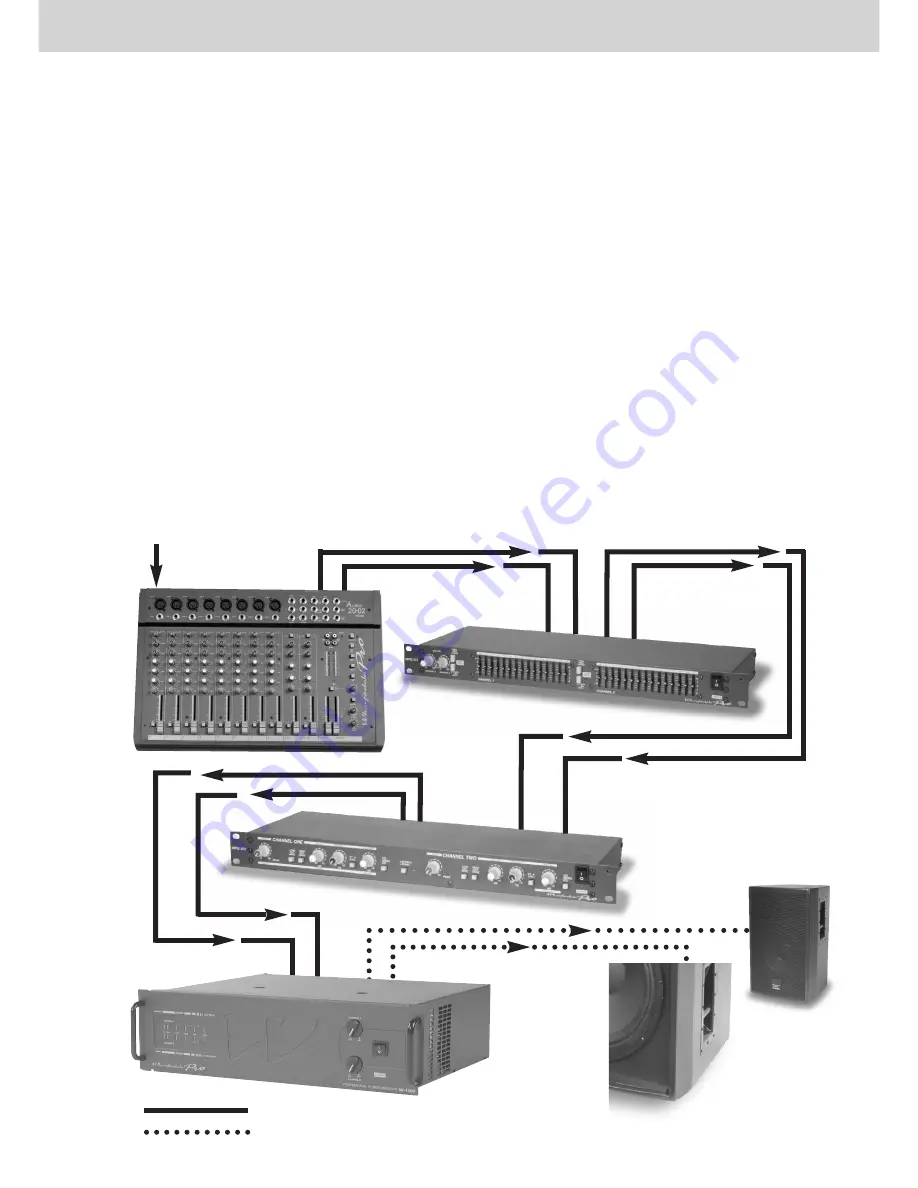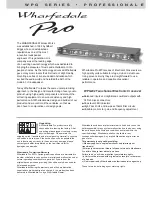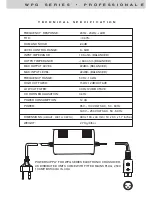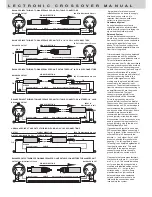
,
,
Selecting the right crossover frequencies
).
Selecting the right Crossover Configuration
Whether you choose stereo 2 way or mono 3 way is
usually dependent on your system. Whether you run
true stereo or not is important. A typical 2 way stereo
system would consist on each side a bass bin and a
mid/high loudspeaker with an internal passive
crossover. The crossover would control the frequency
and output level to the bass loudspeaker and the
mid/high loudspeaker. For a simple low/high stereo
system one WPG-202 in stereo mode is ideal and is
the easiest to set up, as you only require one stereo
power amp. A three way system in stereo would require
2 WPG-202 units, each in mono mode, and effectively
3 stereo power amps (one for each band, low, mid and
high). This set up of discrete crossover channels for
each stack of speakers offers increased flexibility and
control for consistent, optimum sound quality. If you ran
a 3 way system mono with one WPG-202 you would
only require 3 channels of power i.e two stereo power
amplifiers with one channel spare for monitors or in
reserve.
Selecting the right Crossover Frequencies
Most speaker/cabinet manufacturers supply low and/or
high frequency cut-off points for each driver. These cut-
off (crossover points) frequencies are badec on the
loudspeaker/drivers performance at and beyond this
point, with a safety margin built in to accommodate
gentler filter roll-offs. Be careful to operate speaker
components within their recommended limits. This will
allow a safety margin so that the crossover points can
be adjusted without damaging the system. Please
remember that the power requirements for high
frequency (Compression drivers/horns) units are far
lower than for low/mid because the sound from a horn
will be far more efficient. This requires careful setting of
the mid/high controls in two way stereo and the high
control in mono mode to minimise the risk of damage to
the speaker units.
TYPICAL WIRING DIAGRAM FOR 2 WAY STEREO OPERATION OF THE WPG - 202 SERIES CROSSOVER
SIGNAL INPUT
MIC, CD etc. TO MIXER
MIXER
OUTPUT
INPUT TO OPTIONAL
SIGNAL PROCESSOR
i.e GRAPHIC EQUALISER
OUTPUTS TO
CROSSOVER
INPUTS TO
CROSSOVER
SEPARATE
HIGH/MID
AND LOW
OUTPUTS TO
AMPLIFIER(S)
FROM
CROSSOVER
INPUTS TO AMPLIFIER(S)
SEPARATE
LOW
SPEAKER
OUTPUT TO
LOW
FREQUENCY
SPEAKER
FROM
AMPLIFIER
SEPARATE
HIGH/MID
SPEAKER
OUTPUT TO
HIGH/MID
SPEAKER
FROM
AMPLIFIER
= SIGNAL (SHIELDED) CABLE
= LOUDSPEAKER (NON-SHIELDED) CABLE
L E C T R O N I C
C R O S S O V E R
M A N U A L












